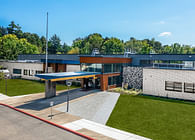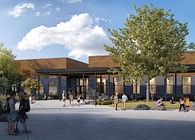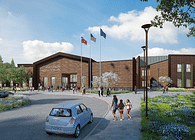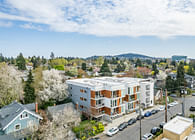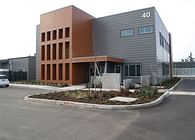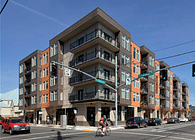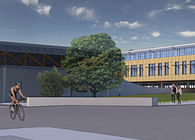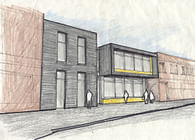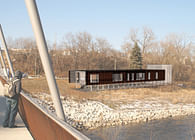
Existing Cambodian housing has been designed for its environment and has the following three primary characteristics:
1. A locally sourced material palette works well for a variety of wooden and woven grass wall assemblies that are innovative in keeping weather out.
2. Open floor plans allow families to adapt to a variety of family sizes, storage needs and activity support.
3. It is common practice to have a house on stilts in response to the seasonal floods. This interstitial space provides important storage and gathering space during the dry season.
Existing Cambodian housing tells of the long history of living in a cyclically flooding area. Stilts, stairs, and boats illustrate the adaptations Cambodians have made to living in varied ecological and sanitation conditions. While the living conditions may seem dilapidated to an outside eye, the major physical structure of Cambodian housing is rational, well ordered, and is rooted in the family’s customization of their home to meet their required spaces. It is not the vernacular housing unit that must be improved, but rather the key to addressing issues of health, safety, and affordability is to provide sustainable solutions to the following key points:
WATER COLLECTION / FILTRATION
Most Cambodian Families have large concrete pots for storing water but leave it exposed to the elements in a way that may encourage the growth of bacteria or organisms which have the potential to cause health problems. During wet seasons, water collection may be easier due to rain catchment, but flooding also presents a sanitation issue since human waste may mix with water collection vessels.
WASTE MANAGEMENT
Currently, people walk into the woods just a little ways away from the house to set down. While there may an informal order to this practice seepage into crop fields, transmissions of diseases and parasites like hookworm as well as water contamination as mentioned previously are very real and dangerous side effects of uncontained human waste.
COOKING
Many families cook indoors with open fires and little ventilation besides a few windows providing a breeze. The largest concern with an open fire is the possibility of smoke inhalation, especially dangerous for children and mothers who do most of the cooking.
ADAPTABILITY
Each of these issues has to be considered in the context of changing climatic conditions, the most predominant being the seasonal floods that are pervasive in Cambodia’s many deltas and basins. The relatively sedentary rains bring about a change in lifestyle that requires boats to paddle to other houses, to use the bathroom or gather materials. Floods can also damage goods that may be stored under the house harm important family livestock. In addition, human waste that is exposed can be picked up and contaminate family water supplies as well as the water people are forced to boat in. Each of these issues affects the basic housing typology that has developed in Cambodia and can be treated in an effective simple way.
HOUSING CORE SERVICES
WATER WASTE COOKING
The housing core serves as a way to efficiently deliver lacking sanitation, storage and fuel services. Water from the rooftop collection is stored in barrels which is routed to a toilet and spigots for cooking and bathing. Waste is deposited and flushed into a biodigester set into the ground which allows anaerobic decomposition treatment as well as producing methane fuel. This methane is used to supplement fuel needs for cooking. The cooking areas also contain rocket stoves that make more efficient use of wood fuel for cooking.
ELEVATED MONSON WATER LEVELS
A cooking area on each the first and second levels of the housing core make it possible to enjoy preparing and gathering for meals under the shade of the house in the hot, dry seasons while maintaining an elevated cooking space accessible year round. Both share a brick chimney that reduces the chances of respiratory harm.
DWELLING UNIT The design of the house itself honors the vernacular of rural Cambodian housing while at the same time being optimized for modular construction and use of housing core. The roof pitch is optimized for water collection to the housing core. It is constructed of woven bamboo for water collection, while also allowing the structure to breathe. Wall construction is dimensional lumber, allowing for modular construction, while window shutters are constructed of traditional woven palm (providing a possible economic incentive). Lastly, the house maintains the open plan of the traditional Cambodian house; allowing the occupants future flexibility and customizability in it’s use.
Status: Competition Entry
Location: Phnom Penh, Cambodia
My Role: Designer
Additional Credits: Peter Barich, Copeland Downs, Eric Nielsen
